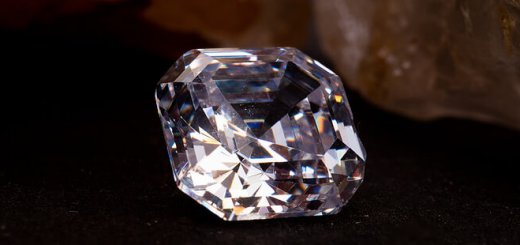Diamonds have long held a special place in human culture and society, symbolising luxury, beauty, and enduring love. However, recent advancements in technology have given rise to lab-grown diamonds, sparking a debate about their differences, costs, production methods, and environmental impact in comparison to their natural counterparts.
Composition and Origins: Natural diamonds are formed deep within the Earth’s mantle over millions of years under immense pressure and heat. They are the result of carbon atoms bonding together in a crystalline structure. On the other hand, lab-grown diamonds, also known as synthetic or cultured diamonds, are created in controlled environments using advanced techniques that replicate the natural diamond-growing process. They share the same physical, chemical, and optical properties as natural diamonds, making them visually indistinguishable to the naked eye.
Differences in Cost: One of the most noticeable differences between lab-grown and natural diamonds is their cost. Lab-grown diamonds are often priced lower than their natural counterparts. For instance, a one-carat lab-grown diamond might cost around 20-40% less than a natural diamond of similar size and quality. In Australia, as of my last update in September 2021, a one-carat natural diamond might range from AUD 5,000 to AUD 20,000, while a lab-grown diamond of the same size could cost around AUD 3,500 to AUD 14,000. These prices can vary based on factors like cut, colour, clarity, and brand. Some further general purchasing factors can also affect price, rather than buying from retail stores, if you buy from an Australian online diamond wholesaler, costs for both natural and lab grown diamonds can be greatly reduced.
Production Methods: The production processes for natural and lab-grown diamonds are distinct. Natural diamonds require mining, which involves extracting diamond-rich ore from deep within the Earth, followed by sorting, cutting, and polishing. This process can have significant environmental impacts, including habitat destruction and carbon emissions.
Lab-grown diamonds, however, are created using two primary methods: High Pressure High Temperature (HPHT) and Chemical Vapour Deposition (CVD). In the HPHT process, a diamond seed is placed under high pressure and high temperature conditions that mimic the Earth’s mantle, allowing carbon to crystallise around the seed. In CVD, a diamond seed is exposed to a carbon-rich gas, causing carbon atoms to deposit and form a diamond layer. While lab-grown diamonds do have an environmental impact due to the energy consumption of the production process, they generally have a lower carbon footprint than mined diamonds.
Environmental Impact: The environmental impact of diamonds, whether natural or lab-grown, is a subject of concern. Traditional diamond mining can result in habitat destruction, soil erosion, water pollution, and carbon emissions. Additionally, conflict diamonds, also known as blood diamonds, have funded conflicts in various regions, leading to human rights abuses.
In contrast, lab-grown diamonds offer a more environmentally conscious alternative. They require less land and water and produce fewer carbon emissions compared to traditional mining practices. Moreover, the ethical concerns associated with conflict diamonds are largely mitigated with lab-grown diamonds, as their origins are traceable and more transparent.
Conclusion: The choice between lab-grown and natural diamonds ultimately depends on personal values, preferences, and budget. Lab-grown diamonds offer a more affordable option with fewer ethical and environmental concerns, while natural diamonds retain their enduring allure and historical significance. As technology continues to advance, the diamond industry is likely to see further changes in terms of consumer choices, production techniques, and environmental considerations. Whatever the choice, the beauty and symbolism of diamonds will continue to captivate hearts around the world.












